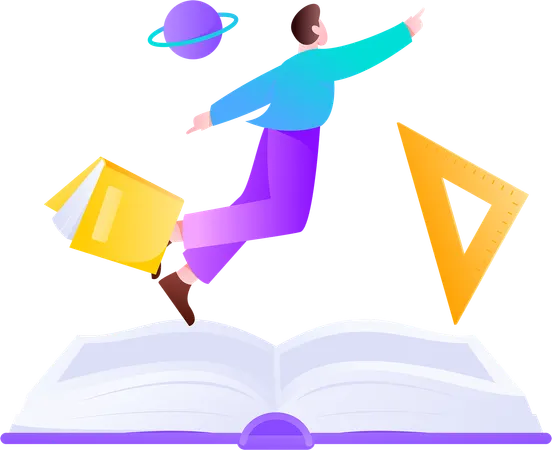Professional Courses
Industry-relevant training in Business, Technology, and Design to help professionals and graduates upskill for real-world careers.

Categories
Interactive Games
Fun, engaging games to boost memory, math fluency, typing speed, and English skills—perfect for learners of all ages.

Typing
Memory
Math
English Adventures
Knowledge
Enroll to start learning
You’ve not yet enrolled in this course. Please enroll for free to listen to audio lessons, classroom podcasts and take mock test.
Interactive Audio Lesson
Listen to a student-teacher conversation explaining the topic in a relatable way.
Spiritual Authority and Land Ownership
Unlock Audio Lesson
Signup and Enroll to the course for listening the Audio Lesson

The Catholic Church owned vast tracts of land during the medieval period. Bishops and abbots often acted as feudal lords. Can someone explain what we mean by 'feudal lords'?

Feudal lords were individuals who managed large areas of land in exchange for loyalty and military service.

Exactly! The Church wasn't just a spiritual authority; it had real political power as landholders. This intertwining of spiritual and temporal power helped shape medieval governance. Can anyone think of how this might affect the Church's influence on society?

It probably allowed the Church to have more say in political matters, right?

Correct! By managing these estates, the Church was integral in the feudal system, affecting laws, social structure, and governance.
Cultural and Educational Centers
Unlock Audio Lesson
Signup and Enroll to the course for listening the Audio Lesson

The Church was not just about spiritual guidance; it also played a significant educational role. Can anyone share how monastic scriptoria contributed to this?

Monastic scriptoria copied and preserved many classical and religious texts, which helped maintain knowledge during the Middle Ages.

Yes! These efforts were pivotal in ensuring the survival of classical knowledge. Additionally, cathedral schools eventually led to the rise of medieval universities like those in Paris and Bologna. Why do you think this had a long-term impact on European society?

It probably promoted literacy and learning, which laid the groundwork for the Renaissance!

Absolutely! This educational influence of the Church was essential for the intellectual revival that followed.
Moral and Social Influence
Unlock Audio Lesson
Signup and Enroll to the course for listening the Audio Lesson

Along with governance and education, the Church's teachings greatly influenced societal values. What are some key values advocated by the Church?

Values like obedience and charity!

Right! The Church's moral teachings shaped expectations of behavior within society, reinforcing its hierarchical structures. Can anyone elaborate on how the Church courts operated?

They handled matters like marriage and moral conduct, similar to secular courts.

Exactly! This dual court system allowed the Church to exert significant authority over everyday life.
The Crusades
Unlock Audio Lesson
Signup and Enroll to the course for listening the Audio Lesson

The Crusades were a pivotal event in medieval history, initiated by Pope Urban II. What was their main purpose?

To reclaim Jerusalem from Muslim rule!

Correct! However, they also had broader implications. How did these military expeditions impact the Church's authority?

They showcased the Church's influence and brought back new knowledge and goods from the Islamic world.

Exactly! The Crusades not only reinforced the Church's power in Europe but also expanded cultural and commercial exchanges between different regions.
Introduction & Overview
Read a summary of the section's main ideas. Choose from Basic, Medium, or Detailed.
Quick Overview
Standard
During the medieval era, the Catholic Church became a dominant institution, owning vast tracts of land and exercising significant cultural, moral, and social influence. It established educational centers, engaged in the Crusades, and shaped societal values through its teachings and governance.
Detailed
Role of the Church
The Church, particularly the Catholic Church, held an essential place in medieval society, influencing various aspects of life from governance to culture. Here are the key points:
- Spiritual Authority and Land Ownership: The Church owned large land estates, with bishops and abbots acting as feudal lords. Monasteries, such as Benedictine, Cluniac, and Cistercian, not only managed these lands but also collected tithes, providing crucial resources to support their activities.
- Cultural and Educational Centers: Monastic communities preserved classical and religious texts through scriptoria, and cathedral schools emerged in towns, paving the way for the establishment of medieval universities like those in Paris and Bologna by the 12th century.
- Moral and Social Influence: The teachings of the Church instilled societal values such as obedience, charity, and a hierarchical structure in society. Church courts dealt with family law, wills, and moral conduct, functioning in parallel with secular courts.
- The Crusades (1096–1291 CE): Initiated by Pope Urban II to reclaim Jerusalem, the Crusades not only reinforced the Church's authority but also fostered contacts with the Islamic world, facilitating the exchange of knowledge (e.g., in astronomy and medicine) and commodities (like silk and spices) back to Europe.
Thus, the Church significantly influenced the transformation of medieval society, establishing frameworks that interlinked spirituality with social and political structures.
Audio Book
Dive deep into the subject with an immersive audiobook experience.
Spiritual Authority and Land Ownership
Unlock Audio Book
Signup and Enroll to the course for listening the Audio Book
The Catholic Church owned vast tracts of land. Bishops and abbots were often feudal lords. Monasteries (Benedictine, Cluniac, Cistercian) administered vast estates, collected tithes, and provided education and hospitality.
Detailed Explanation
During the medieval period, the Catholic Church was a powerful institution that not only provided spiritual guidance but also owned large amounts of land. Bishops and abbots, who were in charge of religious institutions, had significant influence as they were often compared to feudal lords, managing the land and overseeing the welfare of their communities. Monasteries of different orders (Benedictine, Cluniac, and Cistercian) played crucial roles in this system, managing estates and collecting tithes (a portion of earnings given to the Church). Besides their religious duties, these monasteries offered education and hospitality, caring for travelers and the needy.
Examples & Analogies
Imagine a local charity that provides food and shelter to those in need, while also managing a large plot of land that produces food and resources. Just like this charity, the Church not only helped people spiritually but also ensured their physical well-being through land management and charitable acts.
Cultural and Educational Centers
Unlock Audio Book
Signup and Enroll to the course for listening the Audio Book
Monastic scriptoria copied and preserved classical and religious texts. Cathedral schools emerged in urban centers, eventually giving rise to medieval universities (Paris, Bologna) in the 12th century.
Detailed Explanation
Monastic scriptoria were rooms in monasteries where monks copied important documents, preserving ancient classical works as well as religious texts. This was crucial at a time when literacy was rare. As society progressed, cathedral schools began to appear in cities, offering education to the clergy and the elite. By the 12th century, these schools eventually evolved into universities, such as those in Paris and Bologna, which became centers of higher learning and scholarship.
Examples & Analogies
Think of how today's libraries preserve and share knowledge. Just like modern libraries collect books and resources to educate people, medieval monasteries and cathedral schools worked tirelessly to keep important texts alive, ensuring that knowledge was passed down through generations.
Moral and Social Influence
Unlock Audio Book
Signup and Enroll to the course for listening the Audio Book
The Church’s teachings shaped societal values—obedience, charity, and hierarchy. Church courts governed matters like marriage, wills, and moral conduct, parallel to secular courts.
Detailed Explanation
The Church significantly influenced societal values during the medieval period. Its teachings emphasized core principles such as obedience to authority, charity towards others, and a structured social hierarchy. The Church also created its own system of courts to handle issues like marriage, inheritance, and moral behavior, operating alongside the secular judicial system. This dual system helped strengthen the Church's authority and its role in everyday life.
Examples & Analogies
Imagine a community where everyone looks up to a respected elder for guidance on moral decisions and community rules. Just like this elder helps shape the community's values, the Church provided moral guidance and established laws that people were expected to follow.
Influence of the Crusades
Unlock Audio Book
Signup and Enroll to the course for listening the Audio Book
Initiated by Pope Urban II, the Crusades aimed to reclaim Jerusalem. Participation reaffirmed the Church’s influence, but also stimulated contact with Islamic lands, leading to the transfer of knowledge (astronomy, medicine) and commodities (silk, spices) back to Europe.
Detailed Explanation
The Crusades, which were military campaigns started by Pope Urban II, were launched with the objective of reclaiming Jerusalem from Muslim control. This massive effort not only solidified the Church's influence over European rulers and populations but also led to increased contact with the Islamic world. As crusaders interacted with Muslim civilizations, they encountered advanced knowledge in various fields, particularly in astronomy and medicine. They also brought back valuable goods like silk and spices, enriching European culture and economy.
Examples & Analogies
Consider a group of students who travel abroad for a cultural exchange program. Upon their return, they bring back new ideas, knowledge, and exciting artifacts from their host country, which help their community grow and learn. Similarly, the Crusades enabled Europeans to gain knowledge and resources from the lands they encountered.
Definitions & Key Concepts
Learn essential terms and foundational ideas that form the basis of the topic.
Key Concepts
-
Spiritual Authority: The Church's role as a guiding spiritual force with significant influence on governance.
-
Land Ownership: The fact that the Church owned large tracts of land, acting as a feudal lord.
-
Cultural Influence: The Church's impact on education through scriptoria and university formation.
-
Moral Influence: The Church's teachings that shaped societal values and laws.
-
Crusades: Military campaigns initiated by the Church to reclaim the Holy Land and their broad implications for Europe.
Examples & Real-Life Applications
See how the concepts apply in real-world scenarios to understand their practical implications.
Examples
-
The establishment of cathedral schools in urban centers that eventually contributed to the rise of universities in the 12th century.
-
The influence of the Church on laws concerning marriage and moral conduct through church courts parallel to secular courts.
Memory Aids
Use mnemonics, acronyms, or visual cues to help remember key information more easily.
🎵 Rhymes Time
-
Jerusalem's quest was a great test, the Crusades came, no time for rest.
📖 Fascinating Stories
-
Picture a great cathedral filled with students eager to learn, where monks feverishly copy ancient manuscripts to preserve wisdom for future generations.
🧠 Other Memory Gems
-
M.O.C. for the Church: 'M'oral teachings, 'O'wnership of land, 'C'ultural influence.
🎯 Super Acronyms
C.A.R.E. for Church's effect
- 'C'ultural center
- 'A'uthority
- 'R'eligious impact
- 'E'ducational hub.
Flash Cards
Review key concepts with flashcards.
Glossary of Terms
Review the Definitions for terms.
-
Term: Catholic Church
Definition:
The largest Christian church, led by the Pope, which played a significant role in medieval culture and politics.
-
Term: Bishops
Definition:
High-ranking Christian clergy who governed dioceses and possessed significant land and power.
-
Term: Scriptoria
Definition:
Writing rooms in monasteries where monks copied manuscripts and preserved texts.
-
Term: Crusades
Definition:
A series of religious wars sanctioned by the Church to reclaim the Holy Land from Muslim control.
-
Term: Feudal Lords
Definition:
Nobles who controlled land and were granted titles by the king, trading military service for land.

